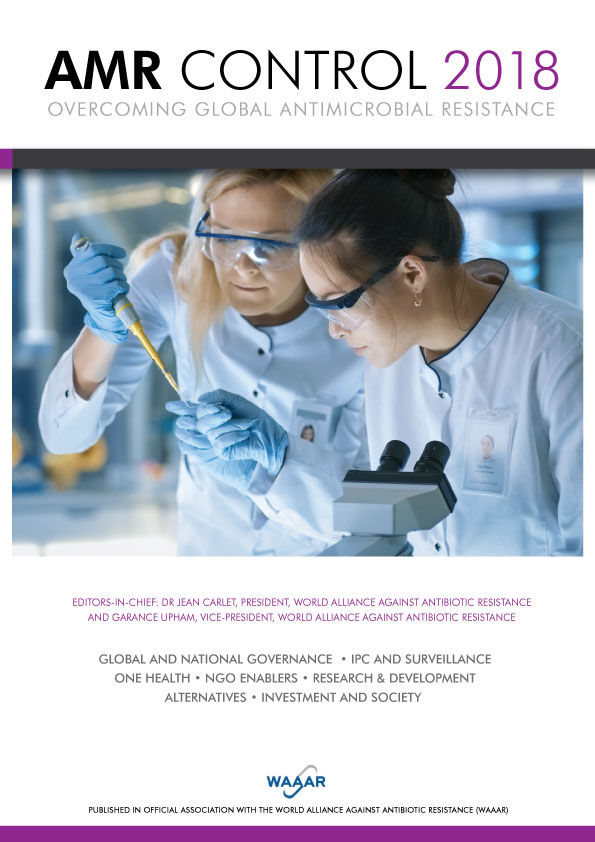M Collins, E Burn and D Ritman, Tropical Health and Education Trust, UK
The model of “health partnerships” or “twinning” between hospitals or health-care training institutions in high-income countries and those in low- or middle-income countries (LMICs) has a role to play in addressing global deficiencies in the quantity, quality and accessibility of human resources for cancer control. Health partnerships are peer-to-peer collaborations focused on meeting the health workforce development needs of the LMIC partner. They can readily adapt to a range of health-care contexts and offer an effective framework for supporting and training health workers, joint learning and sharing expertise internationally.
The incidence of cancer is rising worldwide. It is estimated that by 2030 there will be 22.2 million new cases of cancer and 12.7 million cancer-related deaths annually worldwide (1). More than half of new cases and two-thirds of cancer deaths will occur in low- and middle-income countries (LMICs) where access to early, accurate diagnosis and quality care falls far below what is required (2). This is due to many complex factors, not least, the availability of trained health personnel. There is a critical shortage of health workers in 57 (3) countries caused by factors such as migration, poverty, disease, weak economies and poor infrastructure. This situation is commonly termed the “human resources for health crisis” and it is this crisis that health partnerships work to address.
Over 25 years, the Tropical Health and Education Trust (THET) has led, supported and developed the health partnership approach as a basis for effective health workforce strengthening, accessing (at a lost cost) the vast pool of expertise available within the United Kingdom health-care sector to meet the training and education needs identified by health-care leaders in low-resource settings. THET directly implements health workforce capacity building programmes in Zambia and Somaliland and provides training, advice and grant support to health partnership projects involving more than 200 United kingdom and overseas hospitals, universities and professional associations across 29 countries in Africa, Asia and the Middle East. This article outlines some of the unique characteristics of the health partnership model and presents three cases where the approach is used to improve cancer control capacity: in Bangladesh, locally affordable protocols for curative child cancer treatment, alongside training for doctors and nurses; in Ghana, support for the transition to linac technology through both hands-on-training and distance learning tools; in Nepal, cervical cancer prevention through the implementation of a one-stop service for screening and treatment.
Defining partnership
A health partnership is a relationship between a health institution in a high-income country and a counterpart health institution in a LMIC. Health partnerships aim to strengthen health services in the LMIC by improving health worker competencies and performance. Partners design and implement projects based on needs identified by the LMIC partner. Very commonly, health workers from the high-income country partner will volunteer to spend time in the LMIC institution, designing curricula, training or mentoring their counterparts. Health partnerships often begin through an informal or personal connection between individuals in two institutions. It is the process of widening this connection, deciding to work on a project together and understanding the need to formalize and institutionalize the relationship that marks the beginning of an ongoing partnership (4).
Health partnerships are very diverse, varying in geographical setting, clinical focus, number and type of partner institutions, scope and budget. They use numerous approaches to develop health workers’ knowledge and skills, including formal in-service training courses; on-the-ward teaching and mentoring; curriculum development for pre-service training; learning placements in the region or United Kingdom; distance mentoring and coaching and e-learning; and development of protocols, policies and systems at department and institution level. They may emphasize clinical, professional, leadership or other skills.
Partnership project objectives are based on an institutional needs assessment, a shared vision, joint ownership and a clear understanding of each other’s institutional structures and context. In-service training is designed to fill observed skills gaps, and, while broadly aligned with both national priorities and institutional needs, partnerships are often strong advocates for areas of work not prioritized by existing frameworks. For example, a health partnership might work to address gaps in an existing course or in cases where an institution may be unable to attract, employ or pay the appropriate cadre needed to provide the health services required by the population, the health partnership works to upskill other health workers or lay people (more positively expressed as task shifting).
Despite their diversity, health partnerships have certain shared characteristics – peer-to-peer professional relationships, a long-term perspective and an adaptable nature – that enable them to achieve results that other development interventions often find difficult.
Box 1
paRTner: A United Kingdom-Ghana radiotherapy partnership for the introduction of the first linear accelerators in Ghana and development of a programme for preventative maintenance
Dr K Ricketts, Professor G Royle and Dr P Burke, University College London (UCL)
Ghana can expect 62,500 new cancer patients per annum, and according to the International Agency for Research on Cancer, more than 35,000 of these cases would require radiotherapy. However current radiotherapy services have capacity to treat 5,000, leaving a shortfall of 30,000 untreated patients. International guidelines state that Ghana’s population requires >100 radiotherapy treatment units, yet Ghana currently has only two Cobalt treatment units. The Ghanaian government is starting to address the situation and has invested over £10 million to buy a further three treatment machines. Two of these machines will be linear accelerators (linacs), although at present there is no linac expertise in the country.
The lack of skilled workers required to implement and support linac technology is the key factor hindering Ghana’s radiotherapy development at present. In particular the lack of skilled engineers means that complex equipment is poorly maintained leading to significant downtime in service provision. Access to spare parts and engineers sufficiently trained to deal with day-to-day issues must be addressed (the closest linac support centre is in South Africa).
With this in mind paRTner, a global health partnership between University College London (UCL), Korle-Bu Teaching Hospital (KBTH), Accra, and Komfo Anokye Teaching Hospital (KATH), Kumasi, has formed to support Ghana’s transition to linac technology. UCL offer help in the form of hands on training in conjunction with development of distance learning tools. Current initiatives include: a team of skilled United Kingdom workers will travel to Ghana in early 2015 to commission the first linacs and introduce their first Quality System; partnering Ghanaian radiotherapy medical physics and engineering staff with United Kingdom counterparts who will remotely assist with equipment faults and planning complex linac treatments; an engineering programme for preventative maintenance whereby with the aim of increasing within two years (it is currently about 60%), such that an additional 700 patients receive treatment per year; identifying required equipment necessary for linac maintenance and treatment quality checks, and locating this equipment through the radiotherapy equipment donation network established in 2014. >£250,000 of good equipment has been shipped and will be installed in 2015.
In spite of the future hurdles faced, remaining with Cobalt units is not an option. Staff at KBTH have expressed concern at the severe clinical disadvantages of Cobalt units, particularly the poor quality of treatments (Cobalt units cannot treat deep seated tumours like prostate and cervix) and skin burns, with staff morale being greatly affected. For a fledgling service with limited numbers of qualified personnel the road ahead is challenging, as it was for the pioneers of the United Kingdom radiotherapy service. But in partnership with experienced, enthusiastic, United Kingdom colleagues, who have the benefit of hindsight, the journey can become quicker and smoother. So the road ahead need not be quite so challenging because the template for development has been set and this is where the benefits of a United Kingdom-Ghana radiotherapy partnership lies.
Box 2
Cervical cancer prevention in Nepal: Implementation of a one-stop service for screening and treatment
Dr D Nunns, PHASE Worldwide
A partnership between Nottingham University Hospital NHS Trust, the Maternity Hospital in Kathmandu, the National Public Health Laboratory, PHASE NGO, and the Nepal Network for Cancer Treatment and Research NGO has been formed to reduce the incidence of cervical cancer in the Kathmandu valley through high quality training of health professionals in cervical screening, colposcopy (out-patient examination of the cervix) and cervical pathology. The service delivery of care will be the “single-visit-approach” to disease prevention which involves cervical screening and treatment in one visit.
Cervical cancer is a major cause of death in Nepal and is preventable through cervical screening. Soon the global death rates from the disease will exceed that of maternal mortality. The cervix (also called the birth canal) is situated between the vagina and the womb (uterus). The human papilloma virus (HPV) is common infection in the cervix and can lead to precancerous changes (Cervical intraepithelial neoplasia – CIN) in a small number of patients. A proportion of these women can go onto to develop cancer of the cervix. The good news is that the natural history of the disease from infection to the development of cancer can take years which makes detection and treatment of precancerous cells through screening possible. Lives can be saved with this process. Health worker screening is carried out using the visual inspection with acetic acid (VIA or vinegar test) which takes around five minutes and is similar to a western cervical “pap” smear. Colposcopy is the diagnostic test carried out in 5% of those screened and is a minor out-patient 10-minute procedure. The cervix is viewed at high magnification by a trained health worker (doctor or nurse). A biopsy and/or treatment may be given at the same time (single-visit-approach SVA). SVA avoids the woman having to return for treatment. 1–2% of women screened might need to have treatment with the thermocoagulator under local anaesthetic which can successfully treat CIN (95% cure rates). This is safe, effective, intervention and requires minimal health professional training unlike other methods. The planned pathway (Figure 3) involves community screening of 1,000 women/camp over five days. Approximately 50 women will screen positive and need a colposcopy and 10–20 may require treatment which may potentially prevent cervical cancer development.
What we have done so far? Over the last seven years we have carried out hands-on colposcopy workshops, exchange visits, nurse training, screening camps, training for pathologists and biomedical scientists and quality assurance. There are fully operational colposcopy clinics in the hospitals we work with in Nepal.
Why is our partnership different to other similar cervical cancer prevention projects? We provide a “western” style model of care with: 1) effective treatment with the thermocoagulator superior to cryotherapy (freezing the cervix) used by other centres; 2) a focus on colposcopy as an additional step in the pathway so to avoid unnecessary treatment of women and 3) task-shifting colposcopy roles from doctors to nurses.
What we value? 1) high quality training /education for colposcopists, pathologists and laboratory staff; 2) quality assurance and a focus on outcomes of the overall programme and 3) research as integral part of project development.
Challenges: The main challenge in cervical cancer screening in any setting is to screen large populations with an effective test and successfully treat pre-invasive disease with minimal harm. In a low-resource setting this can be challenging especially in Nepal which is largely rural. Therefore the delivery of this strategy relies on governmental support, committed teams and close working between the all the stakeholders such as women’s groups, community leaders and screening groups.
www.phaseworldwide.org
Peer-to-peer relationships
Personal and professional relationships between health workers are at the heart of health partnerships and are crucial to their success and to the sustainability of what they achieve. Whether it is doctor to doctor, midwife to midwife or administrator to administrator, those working within health partnerships have direct insight into the day-to-day challenges faced by their counterparts and are in an excellent position to tackle challenges and to work inside existing systems for improved harmonization and alignment of activities.
The most commonly cited changes reported by LMIC partners are improved knowledge, skills and practice of staff. Being involved in improvements to service delivery and seeing the changes this resulted in, also bolsters staff morale and confidence. Trainees frequently report that their personal and professional development benefits at an individual level, empowering them to challenge and change practice.
Health-care professionals from the high-income partner volunteer their technical expertise to act as advisers, academic coordinators, mentors and trainers. During an evaluation of the International Health Links Funding Scheme (5) several projects identified the utility of international volunteers mentoring clinicians who had experienced “professional isolation”. Many senior positions are held by clinicians who are relatively junior, making the opportunity to be mentored by senior clinicians from the United Kingdom even more valuable. While their motives may be altruistic, visiting clinicians also gain from their experience. United Kingdom health workers report that their experience in LMICs strengthens their practice in the NHS, particularly in terms of teamwork, leadership and resourcefulness (6). More work is required to quantify the costs and benefits of volunteering within health partnerships for individuals and institutions in the United Kingdom but analysis suggests that the skills acquired through volunteering are transferable to service delivery within the NHS and that the benefits to individuals and institutions could be maximised when volunteering is formally embedded within continuing professional development processes (7).
Long-term perspective
Health partnerships provide a flexible framework for people to work together effectively and responsively for longer periods than typical global health development projects. Institutional agreements provide continuity and strategy beyond the life-cycle of a single project or the involvement of a particular individual. They are the framework within which small scale projects can broaden into more integrated support for health systems such as national and institutional health strategies, standards and protocols. For example, the University of Edinburgh Palliative Care Partnership is working to strengthen and integrate palliative care through a public health and primary care approach into national health plans in Uganda, Zambia, Rwanda and Kenya. The Palliative Care Association of Uganda (PCAU) is working with the Ministry of Health to develop indicators to be included in the country’s health management information system. In Kenya, the national association (KEHPCA) has supported advocacy activities that have led to an increased availability of morphine in hospitals. Zambia, through the national association (PCAZ), has adopted as national documents symptom control management guidelines initiated by the Makerere University Palliative Care Unit, which have been shared through the project. In Rwanda, an allowance for palliative care medicines is now included in the national budget. (Fig. 1).
Health partnerships often work with professional associations or teaching hospitals to build a faculty’s capacity to deliver training and contribute to development or revision of the training curricula. In Zambia, THET works directly in partnership with local training institutions to establish diploma, undergraduate and postgraduate courses. To ensure the quality of training, THET supports north-south and south-south exchange of professionals from academic and government institutions like the recent five month clinical placements for Pathology Masters in Medicine trainees.
Adaptability
Health partnerships are a model for international collaboration that can adapt to the context of the developing country partner. Partners agree priorities cooperatively and in response to needs at the level of the LMIC health institution and health workforce – and adapt them as the need and context change. This flexibility reflects their relatively small size and the personal relationships at their heart. A testament to this adaptability is the valuable role partnerships can play in emergencies. For example, King’s Health Partners (KHP) have remained in Sierra Leone to support the ongoing national and international Ebola response in an advisory and clinical role. In another health partnership, KHP have aided the emergency response to the recent escalation in the conflict in Gaza, in parallel with ongoing training to Palestinian surgeons in the management of major trauma and in post-traumatic limb reconstruction.
Box 3
Developing a network of paediatric cancer units in Bangladesh
E Minor and E Burns, World Child Cancer UK
Childhood cancer survival rates are now 75% to 80% in high-income countries (HIC) but remain as low as 5% to 10% in low-middle income countries (LMICs), where 80% of children live. Every year thousands of children die needlessly and without effective pain relief. But at least 50% of childhood cancers can be cured with simple protocols. Childhood cancer is becoming an increasing threat to life as greater control of communicable diseases occurs.
World Child Cancer UK, a London-based charity established in 2007, facilitates and funds international twinning partnerships linking established childhood cancer units in HICc with developing units in LMICs. These create two-way transfers of medical expertise and skills to save lives and reduce suffering.
A partnership between Bangabandhu Sheikh Mujib Medical University in Dhaka, University College London Hospital and British Columbia Children’s Hospital has been supported since 2012. Excellent progress has been made in the field of paediatric oncology in Bangladesh; the project, which is led locally by Professor Afiqul Islam, has improved data collection in paediatric oncology units, raised awareness of childhood cancers among the population, reduced treatment abandonment and increased survival rates. Following training and other visits to the hospital in Bangladesh, the professionals involved from the United Kingdom and Canada stress that they learn valuable skills from the project visits. Specifically how to work better as a team and improving their training technique – preparing for the training sessions means it is necessary to go back to basics in terms of clinical knowledge and hygiene control. Many emphasise the importance of learning how to treat and care for children with cancer outside of the NHS system – e.g. less diagnostic testing available, limited equipment.
But many obstacles remain – of which four are detailed below:
- The Bangladesh twinning partnership is led locally by Professor Islam, a full-time paediatric oncologist. At first, and when the project was running on a smaller scale, this was feasible. Professor Islam was the designated project lead; it was thought best for him to coordinate activities. But as the scope of the project expands this style of project management is becoming a limiting factor. The twinning partnership needs a dedicated local project manager, and this person must be supervised and supported.
- The project would also benefit from more local fundraising. At present nearly all funds are raised outside Bangladesh; many members of local Bangladeshi communities do not have the experience or financial means to start fundraising. But the long-term sustainability of the project will depend on accessing local sources of funding.
- The standard of nursing in some public medical facilities in Bangladesh is not of a high standard. Nurses are typically not well trained or paid, and this shows itself on the wards. But high standards of nursing – including practices that minimise infections and provide emotional support to patients and their families – are vital in efforts to improve treatment and care for children with cancer.
- Paediatric oncology units in Bangladesh frequently experience shortages of essential chemotherapy and supportive care drugs. This has a predictably catastrophic effect on the treatment available. Issues can arise due to drug registration and licensing problems, or due to criminal activity artificially inflating prices. Solving these problems often requires the engagement of influential stakeholders.
The partnership is working collaboratively to find locally-appropriate solutions to these pressing issues. We believe ideas and lessons from other global partnerships will help us achieve this – ensuring more children in Bangladesh receive the treatment and care they need.
Conclusion
Health partnerships are an adaptable model of global health development that sits comfortably within existing systems, often complements other methods of aid delivery and development co-operation and offers a means for clinicians, technicians and other professionals to work with counterparts in other countries in a structured and strategic way for the long term. However, the approach is not without its challenges and limitations.
Measuring and demonstrating the impact of health partnerships and of health workforce strengthening activities can be difficult: these are complex interventions; data in developing country health institutions can often be poor quality, inconsistent, and difficult to access; partnerships operate on tight budgets with limited time to devote to project management functions such as data collection, management and analysis.
In 2011, the United Kingdom’s Department for International Development (DFID) channelled unprecedented levels of funding (£30 million over 6 years) into health partnership projects. The Health Partnership Scheme (HPS), managed by THET on behalf of the United Kingdom government, has to date provided grant funding to over 100 United Kingdom health institutions working with counterparts in over 25 countries in sub-Saharan Africa, Asia and the Middle East, and provided information and guidance to over a hundred others. Through the funded partnerships, over 1,300 NHS health workers have volunteered overseas to train or support 32,000 health workers in LMICs, including 5,000 nurses, 4,000 midwives, 4,000 community and traditional health workers, 3,000 doctors, 3,000 clinical officers and medical assistants, and 9,000 medical and health-care students.
The diversity of contexts and support means that aggregate figures must be treated with caution, but where tested, across the board 89% of trained health workers have shown improvements in knowledge or skills, and 69% have demonstrated improved practice later on, despite the challenges of improving quality in low resource settings.
Grants to health partnerships represent 78% of the HPS funding; of which a maximum of 20% can be used for project management. The remaining 22% of HPS funding relates to the costs of programme management, administration and support to the health partnerships. THET continually offers guidance and support to build capabilities within the United Kingdom and overseas to design, deliver and evidence effective projects. As HPS evolves, more partnerships are devoting budget and time to developing M&E capacity, for example, data champions. Over the coming years, HPS will give THET a unique opportunity to draw together lessons learnt, regarding what works and what doesn’t within an institutional health partnership. Evidence is beginning to emerge on the mechanisms, strengths and weaknesses of these approaches and how appropriate they are in specific contexts. This will undoubtedly represent a significant step towards establishing the legitimacy and value of health partnerships to meet the challenges of global health workforce development. l
References
2. P. Boyle, B. Levin (Eds.), World Cancer Report 2008. International Agency for Research on Cancer, Lyon (2008)
3. WHO. The World Health Report 2006 – Working together for health. Available from: http://www.who.int/whr/2006/en/
4. THET has produced a Health Links Manual which provides guidance for those engaged or thinking of engaging in health partnerships. Available http://www.thet.org/health-partnership-scheme/resources/publications-old/international-health-links-manual-1
5. The International Health Links Funding Scheme evaluation conducted by Capacity Development International. Available http://www.thet.org/health-partnership-scheme/resources/evaluations-reports/ihlfs-full-evaluation-report
6. All-Party Parliamentary Group on Global Health Report. Improving Health at Home and Abroad: How overseas volunteering from the NHS benefits the UK and the world. 2013
7. Felicity AE Jones, Daniel PH Knights, Vita FE Sinclair and Paula Baraitser. Do health partnerships with organisations in lower income countries benefit the UK partner? A review of the literature. Globalization and Health 2013, 9:38. Available http://www.globalizationandhealth.com/content/9/1/38









